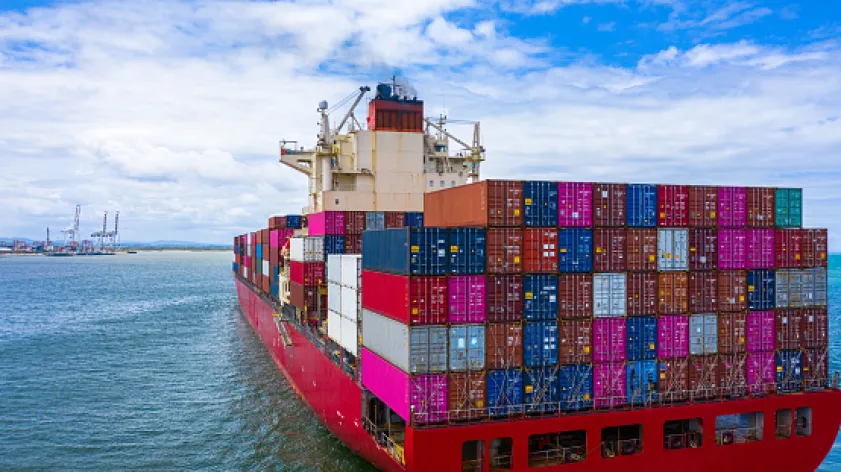Sea freight has long been the backbone of global trade, enabling businesses to move goods efficiently across vast oceans. As globalization deepens and markets become more interconnected, sea freight remains a reliable choice for transporting bulk shipments. For businesses seeking cost-effective and sustainable shipping solutions, sea freight opens the gateway to international commerce.
Understanding Sea Freight: What Makes It Essential?
Sea freight, or maritime shipping, refers to transporting goods through sea routes. It is ideal for businesses moving large quantities of goods that are not time-sensitive. With the ability to handle everything from raw materials to finished products, sea freight plays a crucial role in ensuring supply chain continuity.
A popular method within sea freight is ocean freight, which involves shipping goods in full container loads (FCL) or less-than-container loads (LCL). This structured approach offers flexibility, catering to businesses of all sizes.
Why Choose Sea Freight for Your Shipping Needs?
1. Affordability
Compared to air freight, sea freight offers significant cost savings, especially for large-scale shipments. Businesses can optimize their logistics budgets by choosing sea freight for non-urgent cargo.
2. Versatile Shipping Options
Sea freight provides tailored options to accommodate varying shipment sizes and requirements. Whether it’s FCL for exclusive container use or LCL for shared shipments, businesses can choose what fits their needs.
3. Global Accessibility
Sea freight connects ports across continents, making it a universal solution for international trade. Its extensive network ensures that even the most remote markets can be reached efficiently.
4. Eco-Friendly Shipping
Sea freight has a lower carbon footprint per ton of goods transported compared to air freight. This makes it an environmentally conscious choice for businesses aiming to reduce their impact on the planet.
Breaking Down Full Container Load (FCL) and Less-than-Container Load (LCL)
For businesses utilizing sea freight, choosing between FCL and LCL is a critical decision.
- Full Container Load (FCL):
FCL offers exclusive use of a container, providing enhanced security and faster transit times. This is ideal for businesses shipping large quantities of goods. - Less-than-Container Load (LCL):
LCL consolidates goods from multiple businesses into one container, allowing cost-sharing. It’s a practical choice for smaller shipments that don’t require a full container.
Choosing the right option depends on factors like cargo volume, budget, and urgency. Freight forwarders with expertise in ocean freight can guide businesses in making the optimal decision.
Technology’s Role in Revolutionizing Sea Freight
In today’s digital age, technology has transformed how sea freight operates, making it more efficient and transparent.
- Real-Time Tracking:
Advanced tracking systems allow businesses to monitor their shipments’ journey, ensuring better visibility and control over logistics. - Automation in Documentation:
Automated processes for customs clearance and shipping documentation have minimized errors and reduced delays. - Optimized Route Planning:
Data-driven tools help determine the most efficient shipping routes, saving time and costs. - Sustainability Practices:
Innovations like eco-friendly vessels and optimized fuel consumption align sea freight with global sustainability goals.
Challenges in Sea Freight
Despite its numerous advantages, sea freight also presents challenges that businesses need to navigate.
- Long Transit Times:
Sea freight is slower than air freight, making it unsuitable for time-sensitive shipments. However, for bulk and cost-conscious logistics, it remains the preferred option. - Port Congestion:
Increased demand and infrastructure limitations can lead to delays at busy ports. Strategic planning with experienced freight forwarders can help mitigate this issue. - Complex Regulations:
International trade involves navigating various customs and compliance requirements. Partnering with freight forwarders experienced in ocean freight can simplify these processes.
Sustainability in Sea Freight
As sustainability becomes a global priority, businesses are increasingly choosing sea freight for its eco-friendly benefits. The maritime industry is adopting greener technologies, such as energy-efficient vessels and reduced emissions practices.
Freight forwarders committed to sustainability offer shipping solutions that minimize environmental impact. These initiatives align with corporate social responsibility (CSR) goals and resonate with eco-conscious consumers.
The Role of Freight Forwarders in Sea Freight
Freight forwarders are the unsung heroes of sea freight, bridging the gap between businesses and shipping lines. They manage end-to-end logistics, from booking space on vessels to handling customs clearance.
Companies like Intoglo specialize in ocean freight, providing tailored solutions for businesses seeking seamless shipping experiences. Their services include transparent pricing, real-time tracking, and door-to-door delivery, ensuring that every shipment is handled with precision and care.
Emerging Trends in Sea Freight
The future of sea freight is shaped by evolving market demands and technological advancements.
- Digital Transformation:
The integration of blockchain, IoT, and AI is enhancing transparency, efficiency, and security in sea freight operations. - Focus on 3PL Solutions:
Third-party logistics (3PL) providers are gaining prominence, offering comprehensive services that include transportation, warehousing, and supply chain management. - E-Commerce Influence:
The rise of e-commerce is driving demand for faster and more efficient shipping solutions. Freight forwarders are adapting to these needs with advanced logistics networks.
Key Considerations for Choosing Sea Freight
When selecting sea freight as your logistics solution, consider the following:
- Cargo Type and Volume:
Assess whether your shipment is best suited for FCL or LCL based on its size and urgency. - Budget:
Compare costs between sea freight and alternative modes of transport to ensure alignment with your logistics budget. - Freight Forwarder Expertise:
Partner with a reliable freight forwarder with expertise in ocean freight to navigate complexities and ensure seamless operations. - Transit Time:
Plan your shipping schedules in advance to accommodate longer transit times associated with sea freight.
The Future of Global Trade with Sea Freight
As global trade continues to grow, sea freight remains a cornerstone of international commerce. Its affordability, scalability, and adaptability make it an invaluable choice for businesses across industries.
Freight forwarders, equipped with modern technologies and a commitment to sustainability, are transforming sea freight into a streamlined and eco-friendly logistics solution. Companies leveraging ocean freight gain a competitive edge by accessing global markets with confidence and ease.
Conclusion
Sea freight offers businesses a powerful logistics solution for navigating the complexities of international trade. Its cost efficiency, global accessibility, and eco-friendly attributes make it a preferred choice for transporting goods across continents.
With advancements in technology and the expertise of freight forwarders, sea freight continues to evolve, catering to the dynamic needs of businesses worldwide. Whether you’re shipping bulk commodities or specialized products, ocean freight provides the reliability and scalability required to succeed in today’s global economy.
By embracing sea freight as part of your logistics strategy, you unlock opportunities to expand your reach, optimize costs, and contribute to sustainable trade practices. Let the waves of sea freight carry your business to new horizons.



